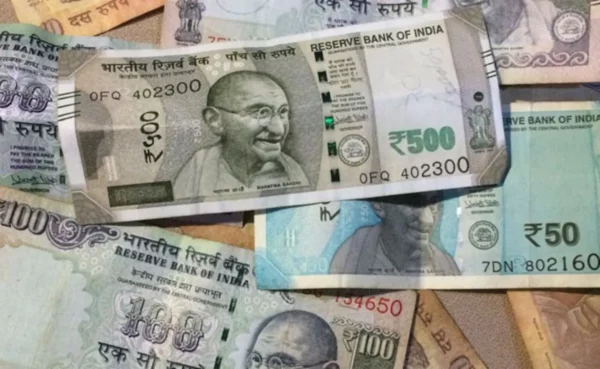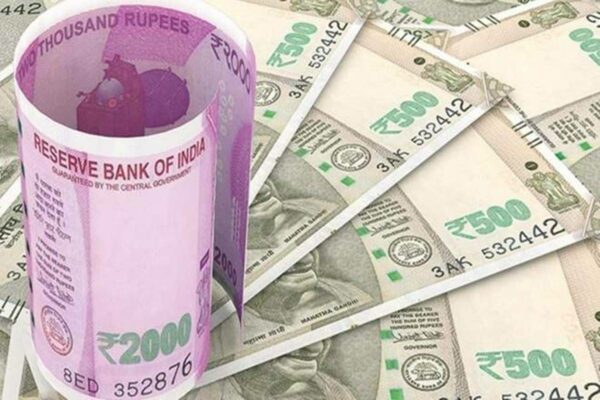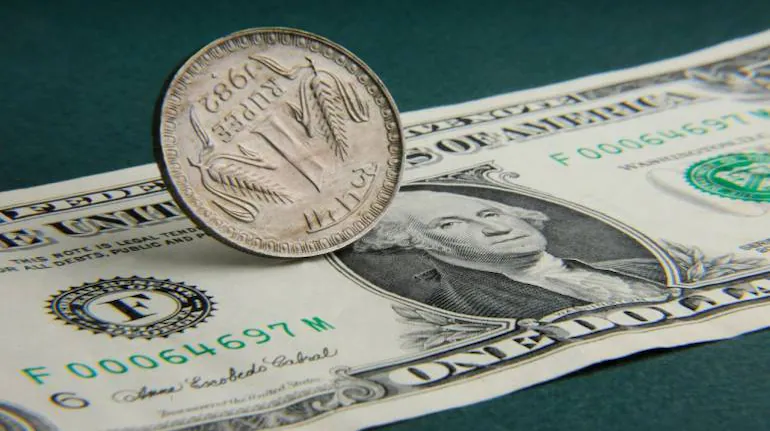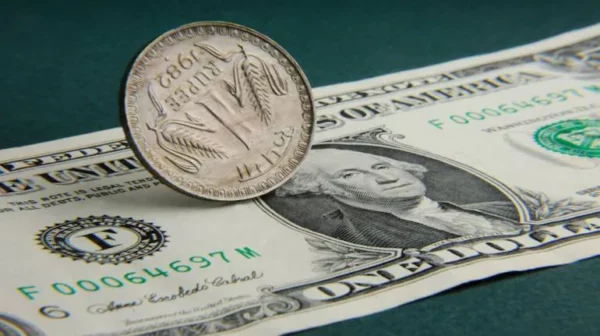As a consequence, the rupee hits an 8-week low against the dollar. All of these factors must be considered, as well as Omicron size variations. On Monday, the rupee fell 28 paisa to a two-month low of 75.40 rupees to the dollar. The rupee’s value now exceeds the Reserve Bank of India’s monetary policy announcement on Wednesday.
The rupee fell sharply due to the loss of local inventories, rising oil prices, and a stronger currency.
Fears of an Evergrande default sent the Sensex and Nifty both below 17,000 points. Analysts say the financial markets have resumed a deadly struggle between bulls and bears. The BSE Sensex fell 1.65% (284 points) to 16,912 points, after losing 949 points the day before to 56,747 points. The rupee hit an intraday low of 75.45. This is the lowest level since October 12th. The lowest level since October 12 is 75.40.
The dollar index rose 0.11 percent to 96.2240, but its strength against other currencies is evaluated by six main currency baskets.
Unlike other indices, Brent crude oil futures rose 2.43 percent to $ 71.58 a barrel.
On Monday, the rupee fell 30 points, finishing at 75.42 (provisional). Local stocks, meanwhile, plummeted 30%. Traders are also concerned about rising oil costs and a stronger currency. Fearing adoption of the Omicron currency, the rupee fell 33 Paisa to end the day at 75.45 vs the dollar.
The threat of Evergrande defaulting added to the gloom.
During the day’s interbank forex trade, the local currency fell against the US dollar, reaching a top of 75.19 cents and a low of 75.45. The local currency was at $ 1.75.42 cents the next day, down 30 cents.
On Friday afternoon, the rupee fell to 75.12.
Locally, the S & P BSE Sensex fell 1.65% and the NSE Nifty fell 1.65% to 56,747.14 and 16,912.25 points, respectively. Brent crude oil futures, the world’s most widely traded benchmark crude oil price, rose 2.43 percent to $ 71.58 a barrel on Friday.
A 0.13 percent increase to 96.23 at the time of writing indicates the dollar is holding up versus a basket of six currencies. The Bombay Stock Exchange’s benchmark Sensex index finished at 56,747.14, down 949.32 points, or 1.65%, while the more frequently traded Nifty index slid 1.65% to 16912.25. I attached. By December 8, 4,444 investors have reduced their risk exposure, according to HDFC Securities research analyst Dilip Palmer.
On three occasions since July 1, according to Anindia Banersey, vice president of currency futures and interest rate derivatives at Kotak Securities.
But if FPI outflows and corporate dollar demand surge, the USDINR may benefit more from risk aversion.
Based on current market conditions, Banerjee anticipates the Indian Rupee to trade between 75.20 and 75.70. The analyst thinks the Fed’s tapering strategy would weaken the rupee and increase trade imbalances. According to CRForex’s managing director, Amit Pabari, more money entering the country through IPOs and corporate bonds may result in higher government outflows.
Pavali spoke with Business Standards about the company.
While this month’s trading days are sparse and much of the world is on vacation, volatility rises. Investors will be watching the signal as the Reserve Bank of India begins a three-day debate on how much to hike the policy rate. Despite today’s quality financing, foreign institutional investors (FII) continue to sell, according to SRanganathan, Head of Research at LKP Securities. increase.

According to S Langanasan, Head of Research at LKP Securities, today’s nifty value is below 17,000 points.
The Reserve Bank of India raised interest rates for the eighth year in a row without increasing inflation. On May 22, 2020, the central bank set a new record low to stimulate demand during periods of unadjusted policy rates. Analysts believe the market is oversold based on their indications and the November drop.
The Sensex and Nifty have both fallen over 10% from their record highs. On Monday, ITax warned foreign portfolio investors (FPIs) to pay higher capital gains taxes in return for non-offset and tax treaty benefits. Currently, the FPI is rather expensive.

For a total transaction value of Rs 3,361 million, Foreign Portfolio Investors sold cash sector shares for Rs 3,361 million. Selling the futures contract added Rs 1,155 million in sales. This month, foreign portfolio investors exchanged Rs. It was sold for 1039.3 billion rupees in cash and 243.5 billion rupees in futures.
While global market confidence has improved, it has not kept pace with the Indian stock market crash. When the Indian market opened, Dow Jones futures were up 0.5 percent, while the European market was up 0.5 to 1 percent.
Despite the current market boom, this does not mean prices will immediately fall due to prior price increases. Currently, the Sensex and Nifty RSI are both around 22. Recently, there has been significant debate about whether an RSI value below 30 suggests large-scale selling of stocks. “Powerful hands operate in harmony,” says Kishor Ostwal, CEO of CNI Global Research.
edited and proofread by nikita sharma




